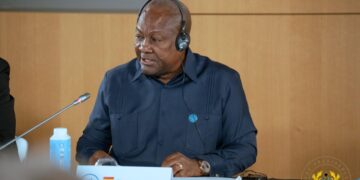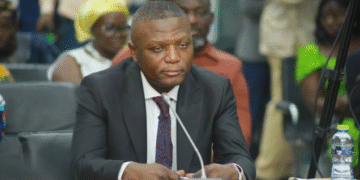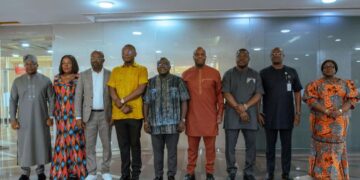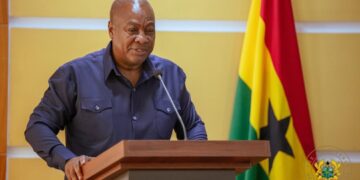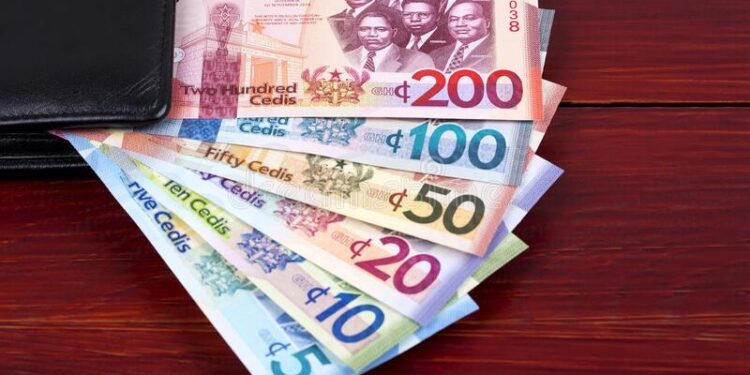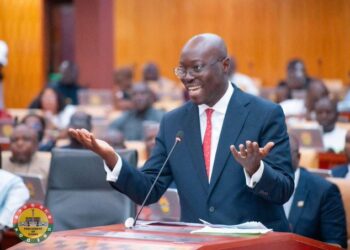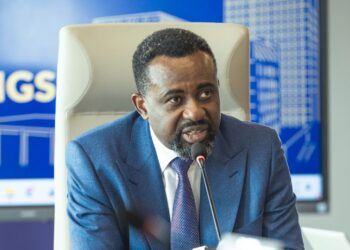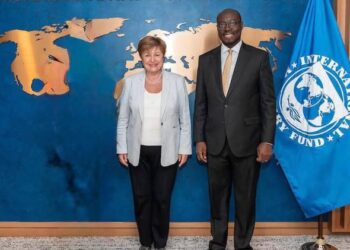By Nana Asare Baffour
Ghana’s journey towards economic growth and stability has been marked by significant milestones, policy shifts, and external challenges. The narrative of Ghana’s economic development, particularly from the early 2000s to 2024, showcases the impact of political leadership, global economic trends, and unforeseen crises like the COVID-19 pandemic.
The discovery of oil in commercial quantities under President John Agyekum Kufuor’s administration marked a pivotal moment for Ghana’s economic prospects. This breakthrough promised not only to diversify the economy but also to propel Ghana into a new era of economic development. President John Atta Mills, Kufuor’s successor, capitalized on this opportunity, leading Ghana into its first-ever oil production in 2010. The commercial extraction of oil set the stage for a period of significant economic transformation.
In 2010, Ghana underwent a rebase of its economy, changing the base year from 1993 constant prices to 2006. This recalibration resulted in a remarkable 60% increase in Ghana’s Gross Domestic Product (GDP), catapulting the country into middle-income status. The rebase not only highlighted the true size and potential of the Ghanaian economy but also restructured the economic landscape. The service sector emerged as the largest contributor to GDP, accounting for 51% of the economy, while agriculture, previously the dominant sector, reduced its share to 30.2%. The industrial sector, despite its potential, lagged with an 18.6% contribution.
This restructuring positioned Ghana as the third-largest economy in West Africa in terms of GDP per capita, behind only Cape Verde and Nigeria. The country’s rapid economic growth, reaching an impressive rate of 14% in 2011, driven by oil production, made it the fastest-growing economy in the world at that time. The achievement underscored the transformative impact of strategic economic policies and the potential of the newly tapped oil resources.
The untimely demise of President John Atta Mills in 2012 led to the ascension of John Dramani Mahama, who inherited a rapidly growing economy. However, the initial optimism soon gave way to economic challenges. During Mahama’s tenure, Ghana’s economic indicators began to falter. The rapid growth experienced in the previous years slowed down due to several factors:
Mismanagement and Policy Missteps: Mahama’s administration struggled to maintain the economic momentum inherited from the Mills administration. The economic policies lacked the cohesion and strategic focus needed to sustain growth in a diversifying economy.
Fiscal Imbalances: Rising public debt and budget deficits became pressing issues. The government’s over-reliance on borrowing strained the economy, resulting in a depreciation of the cedi and increasing inflation.
Energy Crisis: The infamous ‘dumsor’ (power outages) crippled businesses and stunted economic activities. The energy crisis highlighted the structural inefficiencies in the energy sector and the broader industrial base of the economy.
These challenges culminated in a stagnation of the economic growth rate, overshadowing the potential gains from the rebasing exercise. By the end of Mahama’s administration, Ghana’s economic performance had significantly declined, necessitating a change in leadership.
The election of President Nana Akufo-Addo in 2016 brought a renewed promise of economic revitalization. The Akufo-Addo government implemented several measures aimed at stabilizing and growing the economy. Notably, the administration focused on key initiatives such as:
Economic Stabilization and Industrialization: The government introduced the ‘One District, One Factory’ policy to boost industrialization and reduce the economy’s over-dependence on imports.
Fiscal Discipline: Efforts were made to reduce the fiscal deficit and control public debt. The introduction of the Financial Responsibility Act was a step towards maintaining economic stability.
Improving the Business Environment: Initiatives to improve the business climate, such as the reduction of corporate taxes and the digitization of public services, aimed to attract more foreign investment and boost the private sector.
Under Akufo-Addo’s leadership, Ghana regained its status as one of the fastest-growing economies, achieving an average growth rate of 7% between 2017 and 2019. However, this trajectory was abruptly disrupted by the global COVID-19 pandemic.
The COVID-19 pandemic posed unprecedented challenges to the global economy, and Ghana was no exception. The country’s rapid growth rate was halted by the effects of the pandemic and the subsequent lockdowns imposed in March 2020. Economic activities slowed down, and the GDP growth rate plummeted. However, the Akufo-Addo administration’s swift response, including the implementation of relief packages and support for businesses, helped cushion the impact.
As the global economy recovers, Ghana’s economic outlook has once again shown signs of resilience. By the second quarter of 2024, the growth rate stood at 6.9%, indicating a steady recovery. This recovery underscores the effective management of the economy during and after the pandemic.
Ghana’s economic story from the early 2000s to 2024 is proof of the dynamic interplay between policy decisions, global economic trends, and leadership. While the country has faced significant challenges, particularly during Mahama’s administration and the global pandemic, the recent economic performance under the Akufo-Addo/Bawumia ministration offers hope for a more sustainable and inclusive growth trajectory.
Going forward, the focus should be on consolidating gains, diversifying the economic base, and addressing structural inefficiencies to ensure that Ghana remains on a path of steady growth and development.



